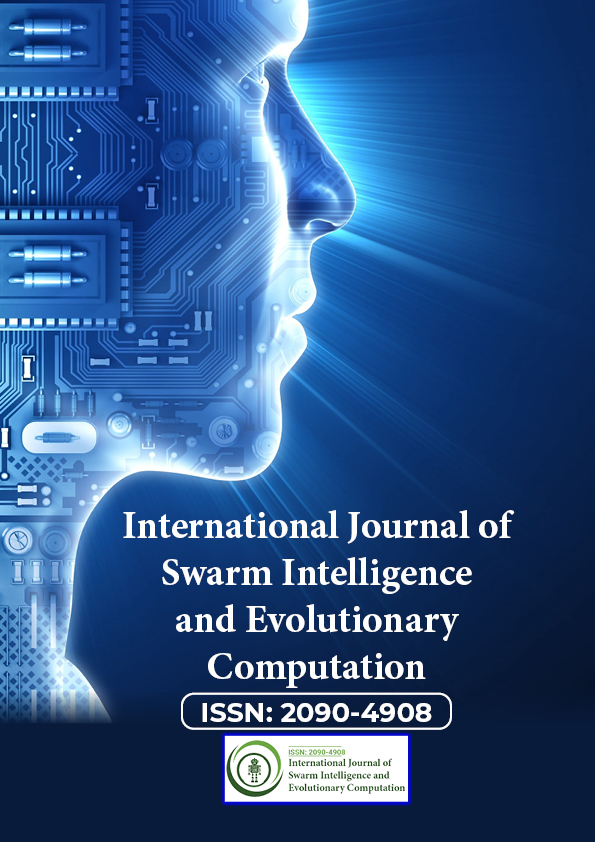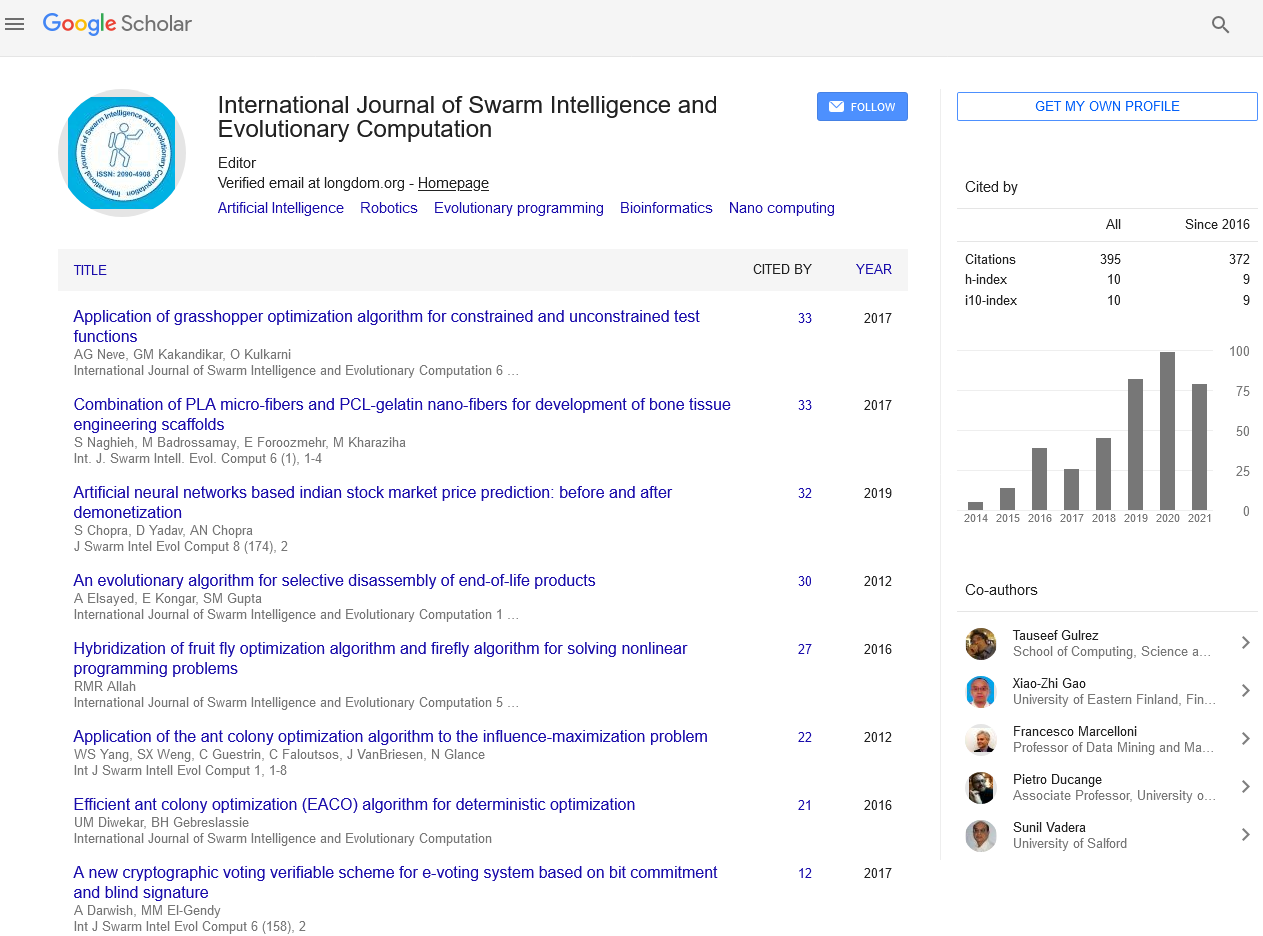Indexed In
- Genamics JournalSeek
- RefSeek
- Hamdard University
- EBSCO A-Z
- OCLC- WorldCat
- Publons
- Euro Pub
- Google Scholar
Useful Links
Share This Page
Journal Flyer

Open Access Journals
- Agri and Aquaculture
- Biochemistry
- Bioinformatics & Systems Biology
- Business & Management
- Chemistry
- Clinical Sciences
- Engineering
- Food & Nutrition
- General Science
- Genetics & Molecular Biology
- Immunology & Microbiology
- Medical Sciences
- Neuroscience & Psychology
- Nursing & Health Care
- Pharmaceutical Sciences
Commentary - (2024) Volume 13, Issue 3
Controlling Neural Power: Applications and Advancements in Artificial Neural Networks
Ben Mitchell*Received: 26-Apr-2024, Manuscript No. SIEC-24-25856; Editor assigned: 29-Apr-2024, Pre QC No. SIEC-24-25856 (PQ); Reviewed: 14-May-2024, QC No. SIEC-24-25856; Revised: 21-May-2024, Manuscript No. SIEC-24-25856 (R); Published: 29-May-2024, DOI: 10.35248/2090-4908.24.13.372
Description
Neural computing, often synonymous with Artificial Neural Networks (ANNs), stands at the forefront of modern computational techniques. Inspired by the complex workings of the human brain, neural computing enhances interconnected networks of artificial neurons to process information, learn from data, and make intelligent decisions.
Principles of neural computing
At its core, neural computing seeks to emulate the neural networks of the human brain. The fundamental principles underlying neural computing include:
Neurons and synapses: Artificial neurons, or nodes, receive inputs, perform computations, and produce outputs. Connections between neurons, known as synapses, transmit signals and enable communication within the network.
Learning algorithms: Neural networks learn from experience through the process of training. Learning algorithms, such as backpropagation and stochastic gradient descent, adjust the synaptic weights of connections to minimize errors and optimize performance.
Activation functions: Activation functions introduce nonlinearity into the network, enabling it to model complex relationships and make nonlinear transformations of input data.
Architectures: Neural networks can be organized into various architectures, including feedforward, recurrent, convolutional, and modular networks, each customized to different types of tasks and data.
Architectures of artificial neural networks
Architectures of artificial neural networks are as follows:
Feedforward Neural Networks (FNNs): In FNNs, information flows in one direction, from input nodes through hidden layers to output nodes. These networks are suitable for tasks such as classification and regression.
Recurrent Neural Networks (RNNs): RNNs incorporate feedback connections, allowing them to process sequential data and capture temporal dependencies. They are used in applications like speech recognition, language modeling, and time series prediction.
Convolutional Neural Networks (CNNs): CNNs are designed to process grid-structured data, such as images and videos, by exploiting the spatial locality of features. They excel in tasks like image classification, object detection, and image segmentation.
Modular neural networks: Modular networks consist of interconnected subnetworks, or modules, that perform specialized tasks. These networks offer scalability, modularity, and strong, making them suitable for complex systems and systematic learning.
Applications of neural computing
Neural computing has revolutionized numerous fields and applications, driving advancements in artificial intelligence, pattern recognition, and decision-making. Some notable applications include:
Computer vision: Neural networks power image recognition, object detection, and image generation tasks, enabling applications like autonomous vehicles, facial recognition, and medical imaging analysis.
Natural Language Processing (NLP): Neural networks are used for language translation, sentiment analysis, text generation, and speech recognition, facilitating applications such as virtual assistants, chatbots, and machine translation systems.
Predictive analytics: Neural networks excel in predictive modeling tasks, including financial prediction, loss of customers prediction, and demand prediction, helping businesses make data-driven decisions and optimize operations.
Healthcare: Neural networks support medical diagnosis, personalized treatment planning, and drug discovery by analyzing medical images, patient records, and genomic data, leading to improved healthcare outcomes and drug development processes.
Robotics: Neural networks enable robot perception, control, and decision-making, enhancing the capabilities of autonomous robots in tasks such as navigation, manipulation, and humanrobot interaction.
Challenges and future directions
Despite their successes, neural computing faces several challenges and opportunities for future research:
Interpretability: Enhancing the interpretability of neural networks to facilitate trust, understanding, and regulatory compliance in critical applications.
Efficiency: Developing more efficient and scalable neural network architectures, algorithms, and hardware implementations to meet the computational demands of large-scale applications.
Continual learning: Enabling neural networks to learn continuously from streaming data and adapt to changing environments and tasks without catastrophic forgetting.
Conclusion
Neural computing stands as a fundamental of artificial intelligence, offering a powerful framework for modeling, learning, and decision-making. With its diverse architectures, learning algorithms, and applications, neural networks continue to push the boundaries of what is possible in fields ranging from computer vision and natural language processing to healthcare and robotics. As research in neural computing advances, the future holds immense promise for unlocking new capabilities, understanding human cognition, and addressing some of society's most pressing challenges. Through ongoing innovation and collaboration, neural computing will undoubtedly remain at the forefront of computational intelligence, shaping the future of technology and human-machine interaction.
Citation: Mitchell B (2024) Controlling Neural Power: Applications and Advancements in Artificial Neural Networks. Int J Swarm Evol Comput. 13:372.
Copyright: © 2024 Mitchell B. This is an open-access article distributed under the terms of the Creative Commons Attribution License, which permits unrestricted use, distribution, and reproduction in any medium, provided the original author and source are credited.


